by Michael F. Mascolo, Ph.D.
The phrase “toxic positivity” began to come into usage around 2019. Toxic positivity is said to occur when people focus only on the positive aspects of experiences while avoiding or denying the negative. The process encourages minimizing, avoiding, or suppressing negative feelings rather than acknowledging, persevering, or working through them[i].
It is not difficult to understand why we do this. We don’t want people to feel badly. We may think that focusing on the good is a way to give people confidence, improve their self-esteem or protect them from anxiety, depression, shame and other strong emotions. The problem, of course, is that it can do just the opposite. By avoiding negative emotions, we never gain the capacity to cope with them. And it is precisely this capacity that we need in order to take on challenges, achieve a degree of success – and cultivate self-esteem.
The Positivity Bias
We receive many messages to focus on the good rather than the bad. In parenting, generations of parents were told that praise and rewards fosters desired behavior and self-esteem, but “negative feedback” undercuts it[ii]. In education, we are told that we should focus student strengths rather than weaknesses[iii]. If students have learning challenges, we are told that we should speak of learning differences rather than disabilities[iv]. From this viewpoint, speaking of learning differences functions to remove the stigma implied by the concept of disability.
As but one example, we are sometimes told that “autism” is a mere difference – not a disability[v]. We are sometimes even told that autism can be seen as a kind of “superpower”[vi]. The intentions here are noble; we want to empower the person with autism; we want to remove any stigma. There are abilities that sometimes come with autism might indeed be seen as superpowers – the capacity for memorization, for example. Nonetheless, difficulties in understanding what is in the minds of others is not one of them. Such a problem is not a mere learning difference; it is a dis-ability – the person is systematically not able to perform the task.
If we want to speak of learning differences, we should think of them not as descriptions of a person’s current capacities, but instead as outcomes that we want to promote. One way to compensate for a learning challenge is to teach someone how to learn differently. But this is a skill that must be cultivated over time with the help of others. It is not the starting point of development; it is the desired outcome of development.
We don’t serve students, children, and others who depend upon us by diverting attention away from difficult experiences. We can best support them by helping them to see accept that their challenges exist, that they are not defined by their difficulties, and that there is something that they can do to cope with and even overcome them.
Good Intentions, Bad Results
The positivity movement is well-intentioned. It is born of a desire to support people and prevent them from bad feelings. From this view, good and bad are judgments. If we can somehow get rid of (negative) judgment, we can provide them with the self-esteem they need to be successful in their endeavors.
This this doesn’t work. Our desire to protect each other from bad feelings produces a kind of paradox. For example, in the United States, indulgent and over-involved parenting – parenting in which adults seek to protect children from shame and challenge — is associated with heightened levels of anxiety, depression and narcissism, and lower levels of environmental mastery, and self-efficacy [vii]. These dispositions carry forward into both college and adulthood[viii].
In comparison to children and teens from many other nations, the self-esteem reported by American children ranks highly[ix]. The USA ranks high among nations in levels of pathological narcissism[x]. However, when it comes to the level of their skills and knowledge, we rank consistently at the midpoint of technologically developed nations[xi].
Our young people are experiencing heighted levels of anxiety, depression, and other forms of psychological difficulty[xii]. Much of this has to do with the added stress of life in recent years caused by the pandemic, economic changes and other issues[xiii]. However, it is also a result of our failure to provide young people with the tools and values that allow them to cope with difficult and strong emotion.
Cultivating the Self through Challenge
But identifying one’s challenges need not challenge self-esteem! Quite the opposite. The key to developing self-esteem is to see that even if we have weaknesses, we are not defined by them. I am not my weaknesses; instead, I am what I do to overcome my challenges. I am not a fixed thing that is either good or bad; I am a developing process with strengths and weaknesses. Even as I strive to become better, I know that I can never be perfect. I can accept myself as I am now — savoring my strengths and accomplishments — even as I endeavor to move forward in the future.
There is no such thing as good without bad. Good is defined in relation to bad. As a result, we cannot identify that which is good without some sense of what is bad. And I cannot become better unless I am able to identify and accept that which exists within myself that needs further improvement. I must be able to identify my challenges if I am going to improve [xiv].
To do this, I must accept my challenges with self-compassion rather than self-derision. I must be taught to see myself as a work in process. I must be taught to reach out for help when I experience challenges. As I take responsibility for overcoming my challenges, I will experience incremental growth. If I identify myself with that growth, I learn to feel good, proud, successful, effective. I learn not to see challenges and imperfections as threats to my self-esteem. I learn to deal with the negative rather and not run from it.
Yes — if I identify myself only with my weakness, I will become depressed. But the solution to this problem is not to pretend that weaknesses, challenges, deficits, fears, and bad feelings do not exist. It is to teach people to identify and accept that they are there – at least for now — and that their identities are not to be defined by their challenges, but instead by how they work to overcome them en route to becoming better versions of themselves.
[i] Bosveld, R. (2021). Positive vibes only: The downsides of a toxic cure-all, https://sandberg.nl/media/document/original/positivevibesonly_evabosveld.pdf; Upadhyay, S.I., Srivatsa, A., & Mamidi, R. (2022). Towards toxic positivity detection. Proceedings of the Tenth International Workshop on Natural Language Processing for Social Media, 64 – 71. Association for Computational Linguistics, https://aclanthology.org/2022.socialnlp-1.7.pdf
[ii] Bhandarkar, S. (2013). How I learned to stop nagging my kids and start motivating them. https://lifehacker.com/how-i-learned-to-stop-nagging-my-kids-and-start-motivat-1464670051; Center for Disease Control and Prevention (2019). How to use rewards. https://www.cdc.gov/parents/essentials/consequences/rewards.html; Morin, A. (2022). How to use Positive to Reinforcement to Improve Behavior. Verywell Family. https://www.verywellfamily.com/positive-reinforcement-child-behavior-1094889
[iii] Hammond, W., & Zimmerman, R. (2020). A strength based perspective. Resiliency Initiatives. https://www.esd.ca/Programs/Resiliency/Documents/RSL_STRENGTH_BASED_PERSPECTIVE.pdf; Strength-Based Psychotherapy, Psychology Today, https://www.psychologytoday.com/us/therapy-types/strength-based-therapy
[iv] Grobecker, B. (1998). The new science of life and learning differences. Learning Disability Quarterly, 21(3), 207–227. https://doi-org.proxy3.noblenet.org/10.2307/1511083; Flowers Health Institute, (2021). Medical diagnosis or learning difference: Untangling diagnosis with proper diagnosis. https://jflowershealth.com/medical-condition-or-learning-difference/
[v] Kearns, T. (2022). Autism is NOT a disability. Autism 360. https://www.autism360.com/news/autism-is-not-a-disability/
[vi] Chow, E., & Hayakawa, M. (2022). Transforming children’s perception of autism through the “superpower” of media representation in the US. Journal of Children and Media. https://doi.org/10.1080/17482798.2022.2059539; Stanton, B. (2022). The superpowers of autism. https://www.lrcss.com/blog/autism-superpowers; Thorne, P, (2020). Autism is a superpower. https://www.coram.org.uk/sites/default/files/resource_files/Autism%20is%20a%20Superpower%20PDF.pdf
[vii] Cui, M., Darling, C. A., Coccia, C., Fincham, F. D., & May, R. W. (2019). Indulgent parenting, helicopter parenting, and well-being of parents and emerging adults. Journal of Child & Family Studies, 28(3), 860–871. https://doi.org/10.1007/s10826-018-01314-3; Segrin, C., Woszidlo, A., Givertz, M., & Montgomery, N. (2013). Parent and child traits associated with overparenting. Journal of Social and Clinical Psychology, 32(6), 569–595. https://doi.org/10.1521/jscp.2013.32.6.569
[viii] Darlow, V., Norvilitis, J., & Schuetze, P. (2017). The relationship between helicopter parenting and adjustment to college. Journal of Child & Family Studies, 26(8), 2291–2298. https://doi.org/10.1007/s10826-017-0751-3; Martin, C. C. (2022). Why do college counselors perceive anxiety as increasing? A semi-structured examination of five causes. Journal of College Student Psychotherapy, 36(1), 23–48. https://doi.org/10.1080/87568225.2020.1753611
[ix] Bleidorn, W., Arslan, R. C., Denissen, J. J. A., Rentfrow, P. J., Gebauer, J. E., Potter, J., & Gosling, S. D. (2016). Age and gender differences in self-esteem—A cross-cultural window. Journal of Personality and Social Psychology, 111(3), 396–410. https://doi.org/10.1037/pspp0000078.supp (Supplemental)
[x] Twenge, J. M., & Campbell, W. K. (2009). The narcissism epidemic: Living in the age of entitlement. New York, NY: Free Press.
[xi] Pisa scores by country 2023. https://worldpopulationreview.com/country-rankings/pisa-scores-by-country
[xii] Bornheimer, L. A., Wang, K., Zhang, A., Li, J., Trim, E. E., Ilgen, M., & King, C. A. (2022). National trends in non-fatal suicidal behaviors among adults in the USA from 2009 to 2017. Psychological Medicine, 52(6), 1031–1039. https://doi.org/10.1017/S0033291720002755; Goodwin, R. D., Weinberger, A. H., Kim, J. H., Wu, M., & Galea, S. (2020). Trends in anxiety among adults in the United States, 2008–2018: Rapid increases among young adults. Journal of Psychiatric Research, 130, 441–446. https://doi.org/10.1016/j.jpsychires.2020.08.014; Mojtabai, R., & Olfson, M. (2020). National trends in mental health care for US adolescents. JAMA Psychiatry, 77(7), 703–714. https://doi.org/10.1001/jamapsychiatry.2020.0279
[xiii] Pirkis, J., John, A., Shin, S., DelPozo-Banos, M., Arya, V., Analuisa-Aguilar, P., et, al. (2021). Suicide trends in the early months of the COVID-19 pandemic: An interrupted time-series analysis of preliminary data from 21 countries. The Lancet Psychiatry, 8(7), 579–588. https://doi.org/10.1016/S2215-0366(21)00091-2
[xiv] Spiegel, A. (n.d,). Struggle means learning: Difference in Eastern and Western cultures. https://campussuite-storage.s3.amazonaws.com/prod/484005/2752018e-59b7-11e6-943a-22000bd8490f/2064570/0c8e79c8-6310-11ea-a217-0a1215fb2c0d/file/Struggle%20Means%20Learning.pdf


If you like what we are doing, please support us in any way that you can.